Table of Contents
Flexible packages have quickly gained popularity in the packaging industry for being a versatile option to meet the diverse needs in many sectors. In fact, this type of packaging is the second largest segment in the United States, with 19% of the $177 billion U.S. packaging market. Not only does this statistic showcase the substantial market presence of flexible packaging, but it also signifies its growing importance in the industry’s future.
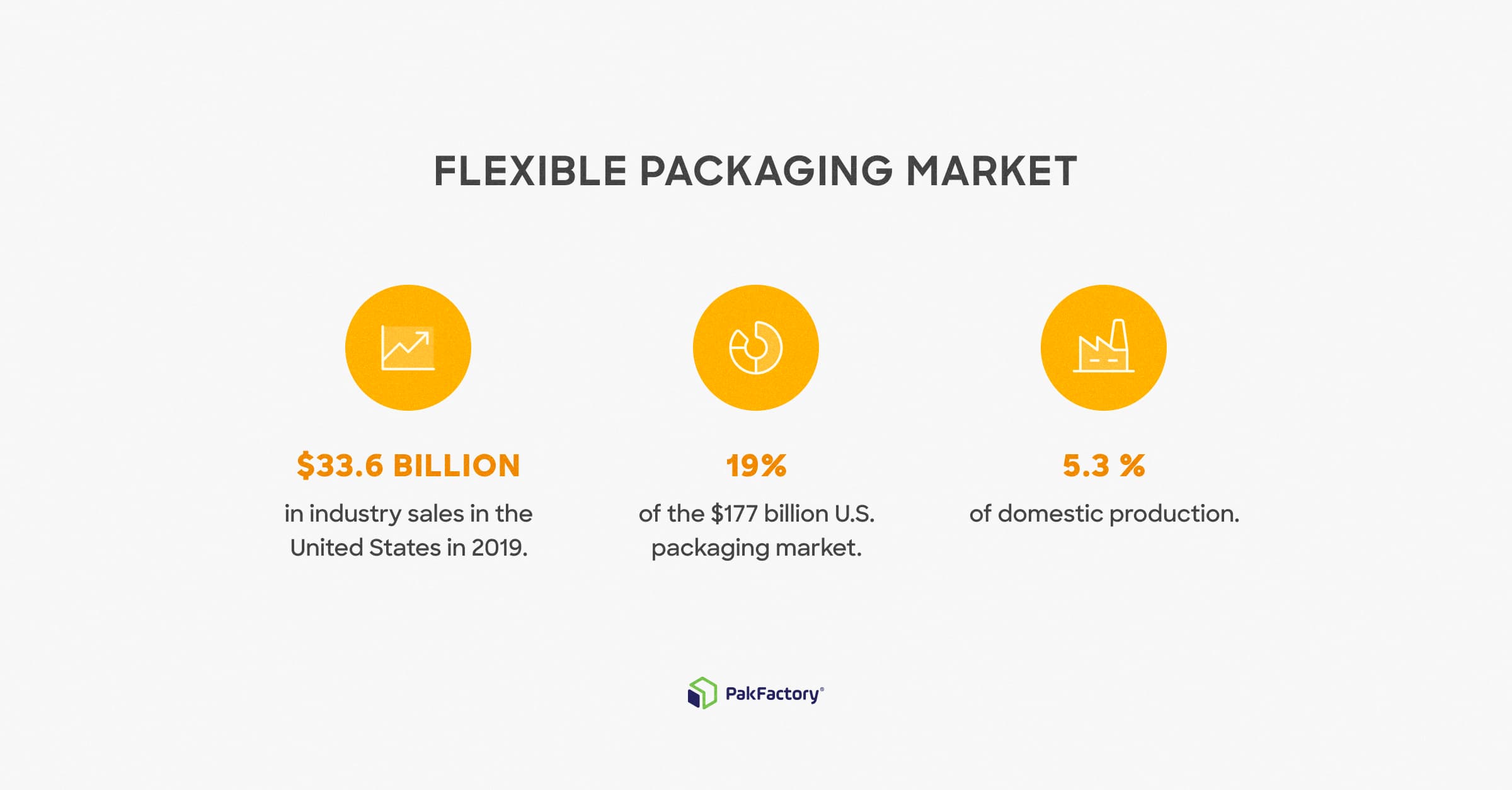
The adaptability to different product types, sizes, and use cases has all contributed to this growing trend that is even more significant in the food, pharmaceutical, and personal care industries. Due to the convenience of usage, storage, extended shelf life and sustainability, flexible packaging solutions have greatly benefited these industries by providing a versatile option preferred by both businesses and consumers.
In fact, a study by Harris Poll found that 71% of respondents expressed an apparent inclination toward flexible packaging over rigid box counterparts. Of that percentage, 79% were knowledgeable about the packaging alternative and were willing to pay up to 14% more for this convenient and hygienic option.
So with the rapidly growing market share and business and consumer preference in mind, it is evident that this packaging solution will continue solidifying its position as a superior option across many industries.
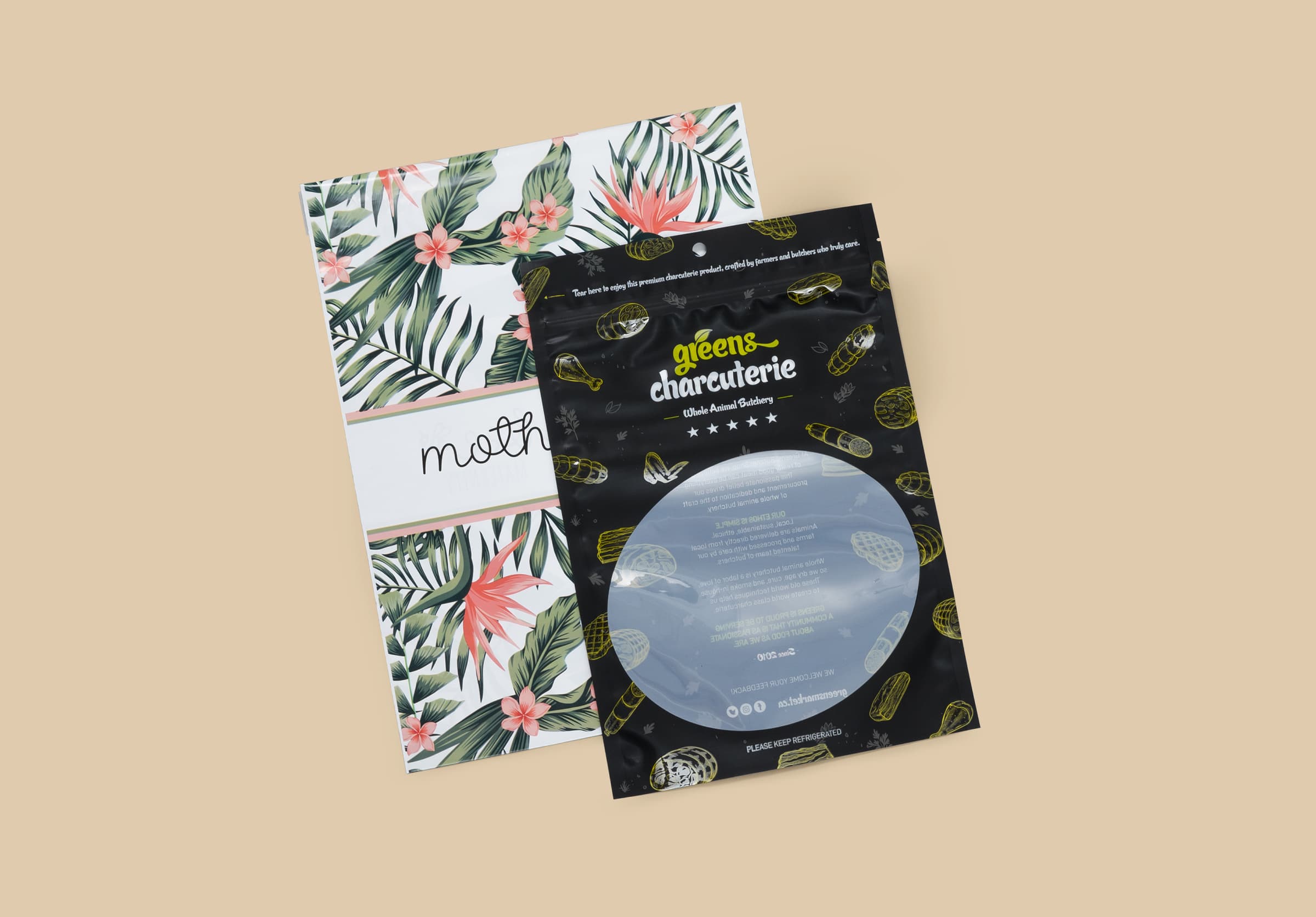
Source: PakFactory
That being said, if you are considering using a flexible packaging solution for your product, you’ve come to the right place! In this article, we will cover everything you need to know about this excellent packaging option to ensure you have all the necessary knowledge to make this critical decision.
What is Flexible Packaging, and Why is it Better?
Before deep diving into the many small details that make this packaging option great, it is essential to establish a broader, foundational knowledge to build from. So the first question to always ask is, what exactly is it?
As the name suggests, flexible packaging is a versatile solution made from pliable packaging materials like plastics, paper, films, foils or a combination of all of them. It is any type of packaging capable of changing shape when filled or used, making it a preferred choice for businesses and consumers with its ability to remain lightweight, cost-effective, reduce carbon footprint, extend product shelf life, and take on endless customization.
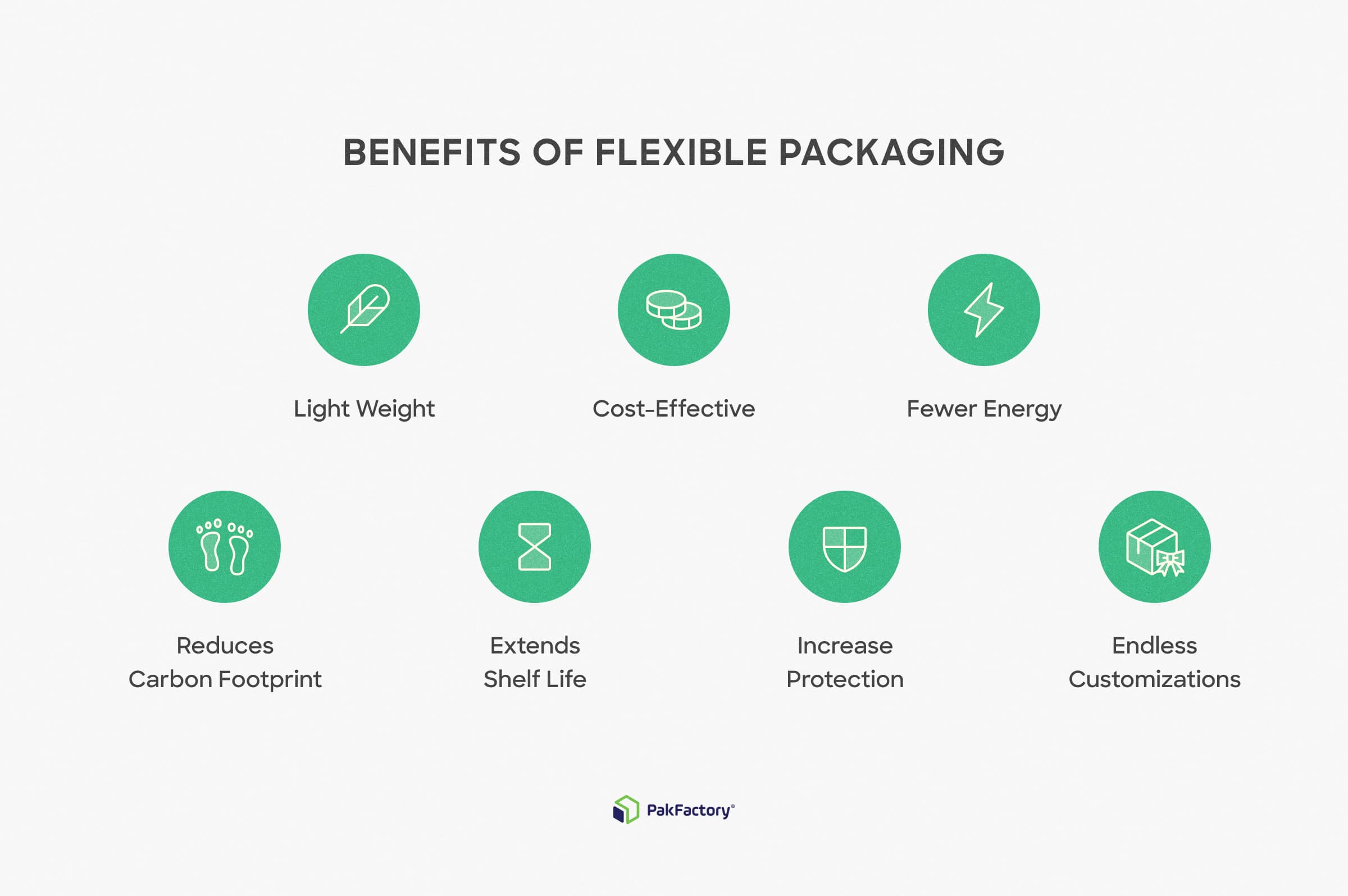
Compared to traditional packaging types like rigid boxes, flexible packaging is more lightweight and cost-effective. The films and barriers that produce the pliable materials require fewer resources and energy to manufacture while offering a more cost-effective approach to shipping, warehousing, and logistics. Businesses gain the opportunity to save across the entire supply chain while maintaining a high-quality standard, but the benefits don’t end here.
The fewer resources and energy requirements to manufacture saves money and cuts the quantities of greenhouse gases produced compared to traditional packaging. Even during disposal, the efficient use of materials results in less overall waste sent to landfills, minimizing the negative environmental impact of this packaging option and making it an excellent step toward sustainability and a reduced carbon footprint.
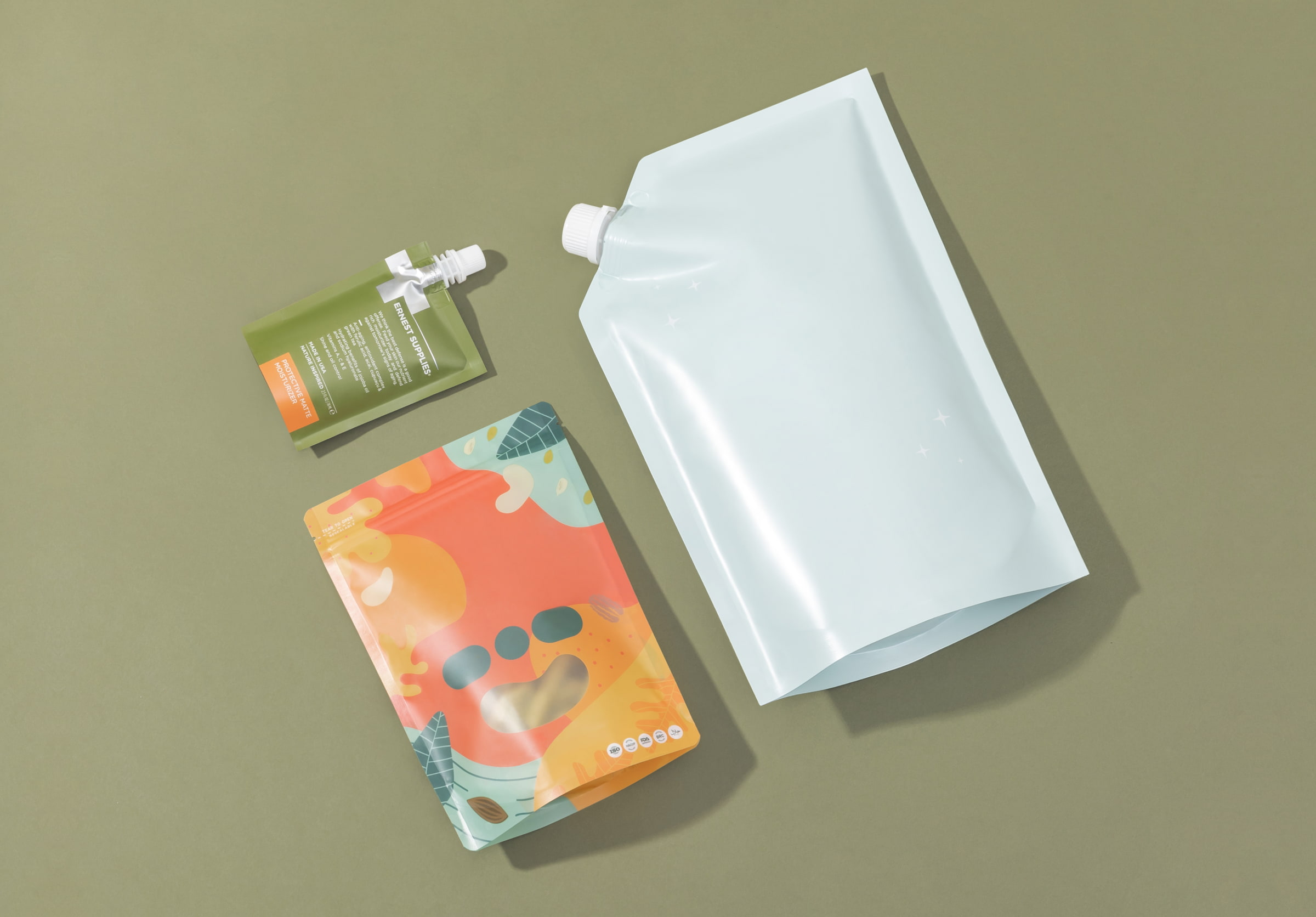
Source: PakFactory
Flexible packaging solutions even offer an extended shelf life and increased protection against contaminants. According to ePac Flexibles, this packaging option creates a barrier against oxygen, moisture, light, and microorganisms, which can cause oxidation, spoilage, discoloration, and contamination. This increased protection benefits the product’s shelf life and reduces the risk of product waste created from spoilage.
Finally, endless customization and options for branding are available. The possibilities are truly limitless, from choosing vibrant colors and captivating graphics, incorporating your logo and brand messaging, or selecting the type of package you want with a wide range of options, such as spouted, flat, or stand-up pouch packages. By leveraging these customization options, you can create packaging that protects your products and is a powerful marketing tool, leaving a lasting impression on consumers.
Browse our full catalog of flexible pouches here!
Key Considerations When Planning the Design of Your Flexible Package
Now with all the benefits of flexible packaging fresh in your mind, are you convinced to use this packaging solution for your products? If so, let’s look closely into the key considerations before beginning your planning.
Designing effective and successful packaging requires careful consideration of several vital factors. Packaging is the first point of contact between your product and the consumer, so creating a design that captures attention and communicates your brand’s value is crucial. Elements such as color, typography, and graphics are integral to conveying your desired message and attracting the target audience.
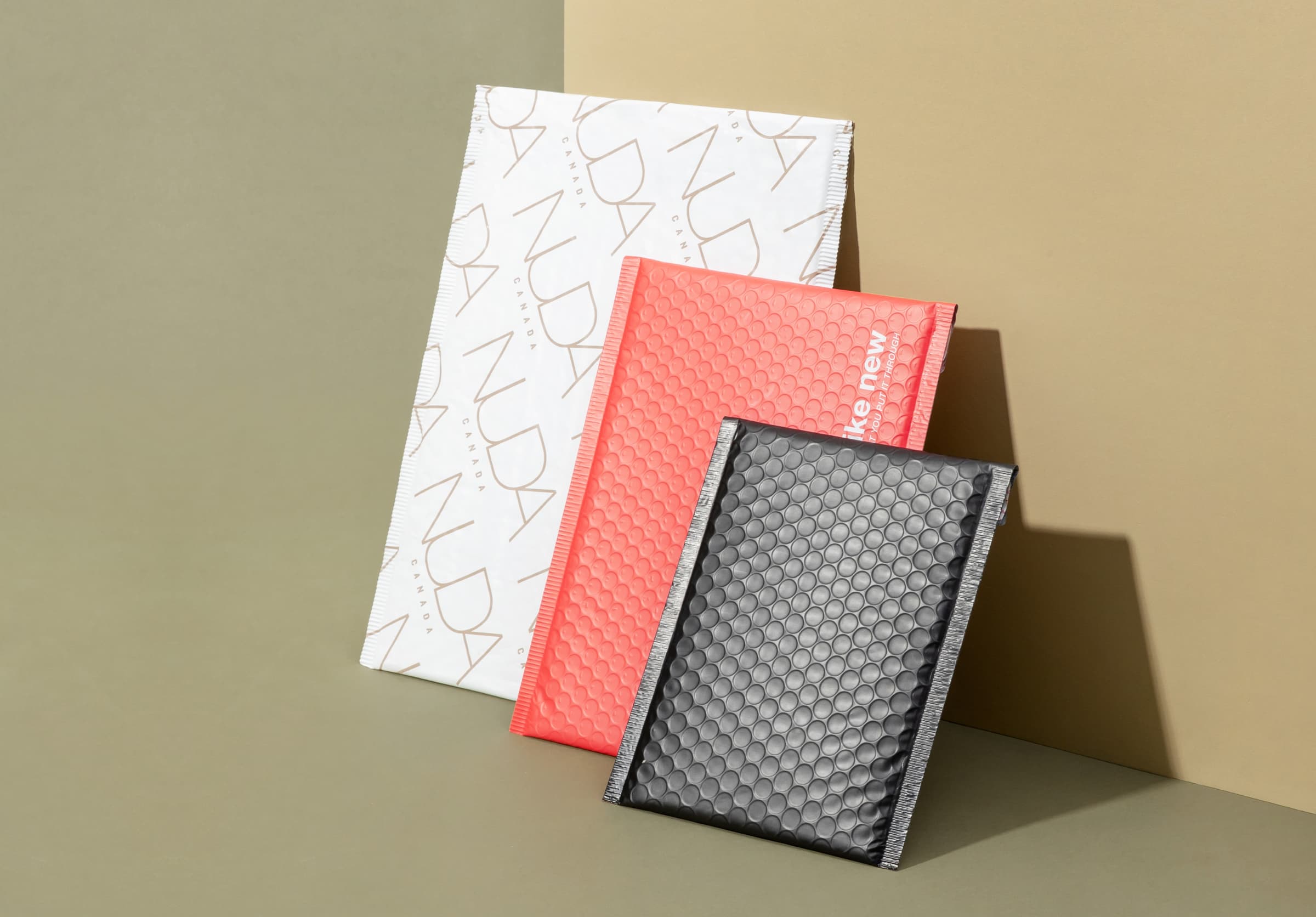
Source: PakFactory
Understanding your product’s requirements is also important for selecting the appropriate packaging materials and formats. Product freshness, shelf life, and transportation considerations are all crucial factors you must consider but do not exclude sustainability. Incorporating sustainability and eco-friendly practices are becoming increasingly important in today’s market as more consumers seek environmentally conscious businesses. And though many crucial factors like those mentioned above require careful consideration, you don’t have to do it alone.
Consulting packaging design and manufacturing experts is highly recommended, as they possess the expertise and industry knowledge to help you make informed decisions regarding materials, structural design, and user-friendly features. Conjunctively, you may look to the consumers too. By analyzing consumer behavior, conducting surveys, and studying market trends, brands can gain insights into consumer preferences which helps packaging designers make informed decisions regarding the visual aesthetics, functionality, and features of the packaging.
Successful packaging design is a collaborative effort to balance aesthetics, functionality, and sustainability to create a memorable, impactful solution. And with flexible packaging, finding this balance has never been easier.
Flexible packaging is adaptable and practical, enabling an enhanced user experience and adding value to your product through easy reusability, convenience and sustainability. It even allows creative design elements that captivate potential buyers with its pliable nature allowing for imaginative, innovative shapes, colors, and textures that make products stand out on the shelves.
Even for branding, which is crucial in differentiating products in a competitive market, flexible packaging provides ample space to effectively use creative graphics, logos, and brand messages, ensuring that the packaging design aligns with your brand’s identity and establishes a strong visual connection with consumers.
But even when all of these creative branding and customization options are available for your experimentation, it is essential to remember that structure, protection, and functionality are equally, if not more, important considerations.
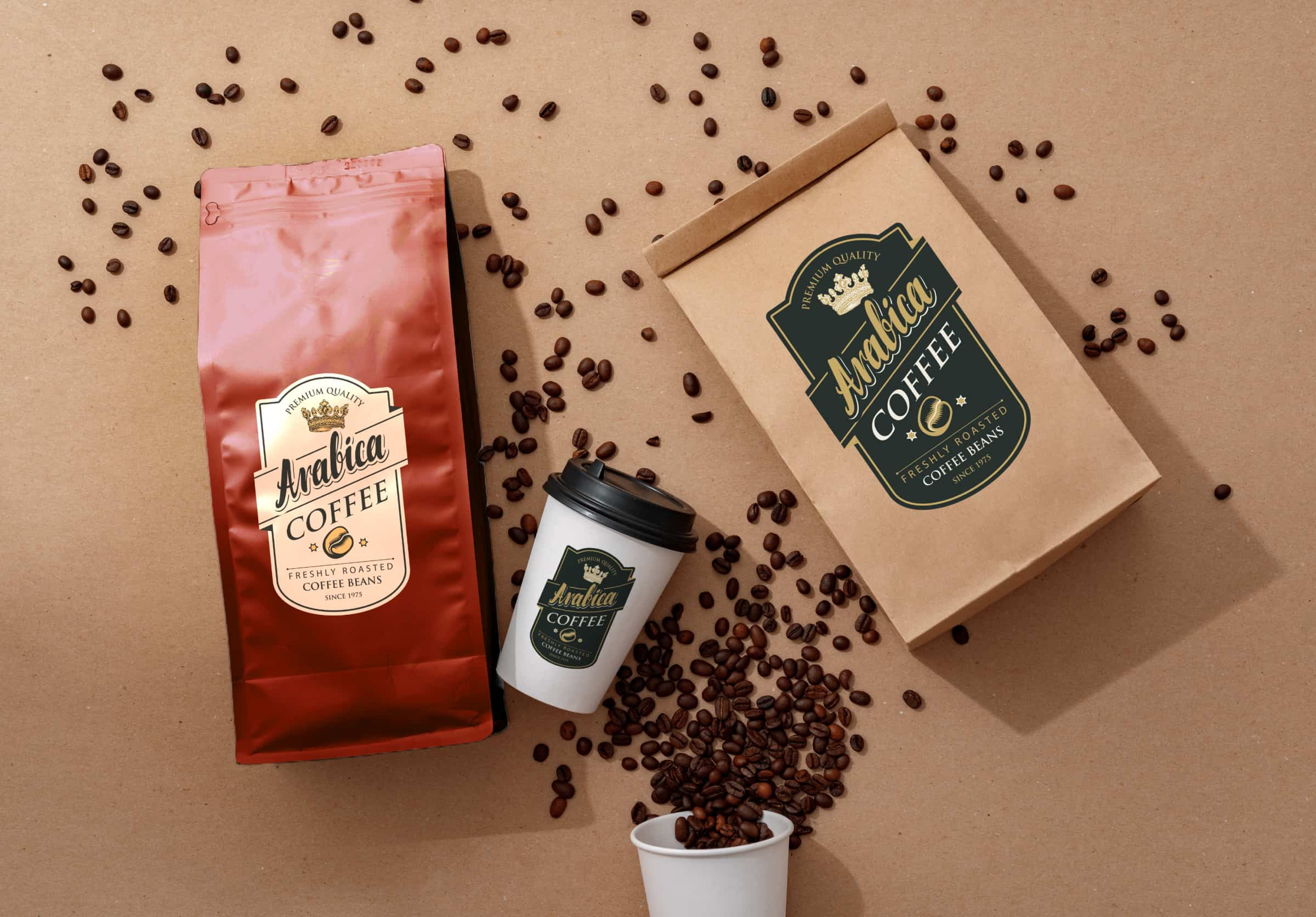
Source: PakFactory
The package should prioritize the protection of the product but maintain convenience, ensuring its freshness and integrity while catering to a user-friendly experience that all consumers want. You can do this by carefully selecting suitable materials and considering factors like barrier properties, puncture resistance, and shelf life. Striking the right balance between convenience and protection in your package’s design is critical to meeting consumer expectations and differentiating yourself from the competition.
So what materials should you use to find the balance? Professional packaging designers and manufacturers will help you find the best material for your product, but let’s look into some of the popular materials used in flexible packaging to better understand what’s available.
Selecting the Right Packaging Materials
The choice of materials significantly impacts the overall performance and suitability of any packaging solution, especially for flexible packages. Factors such as product compatibility, barrier properties, and sustainability considerations are pivotal in selecting the appropriate materials that complement and enhance your product.
Regarding flexible packaging materials, several options have gained popularity due to their performance and suitability for different industries:
- Bioplastics, such as plant-based bottles made from biodegradable plastics, effectively prevent air, grease, and oils from permeating the product, making them standard for flexible plastic packaging in the food and snack industry.
- Polymer films, particularly plastics, dominate the market due to their flexibility and durability, making them widely used in the food industry.
- Corrugated cardboard, though not strictly categorized as flexible packaging, offers protection against moisture and damage and serves as an excellent cushion during transportation.
- Aluminum foil is an effective barrier against oils, moisture, and light while pliable enough to be shaped into various forms like trays and lids.
- Kraft paper, known for its elasticity and strength, is commonly used for durable packaging of chemicals, food, and consumer goods.
- UV protective films help preserve product quality by shielding against harmful UV radiation, commonly used in the food industry for storage and transportation.
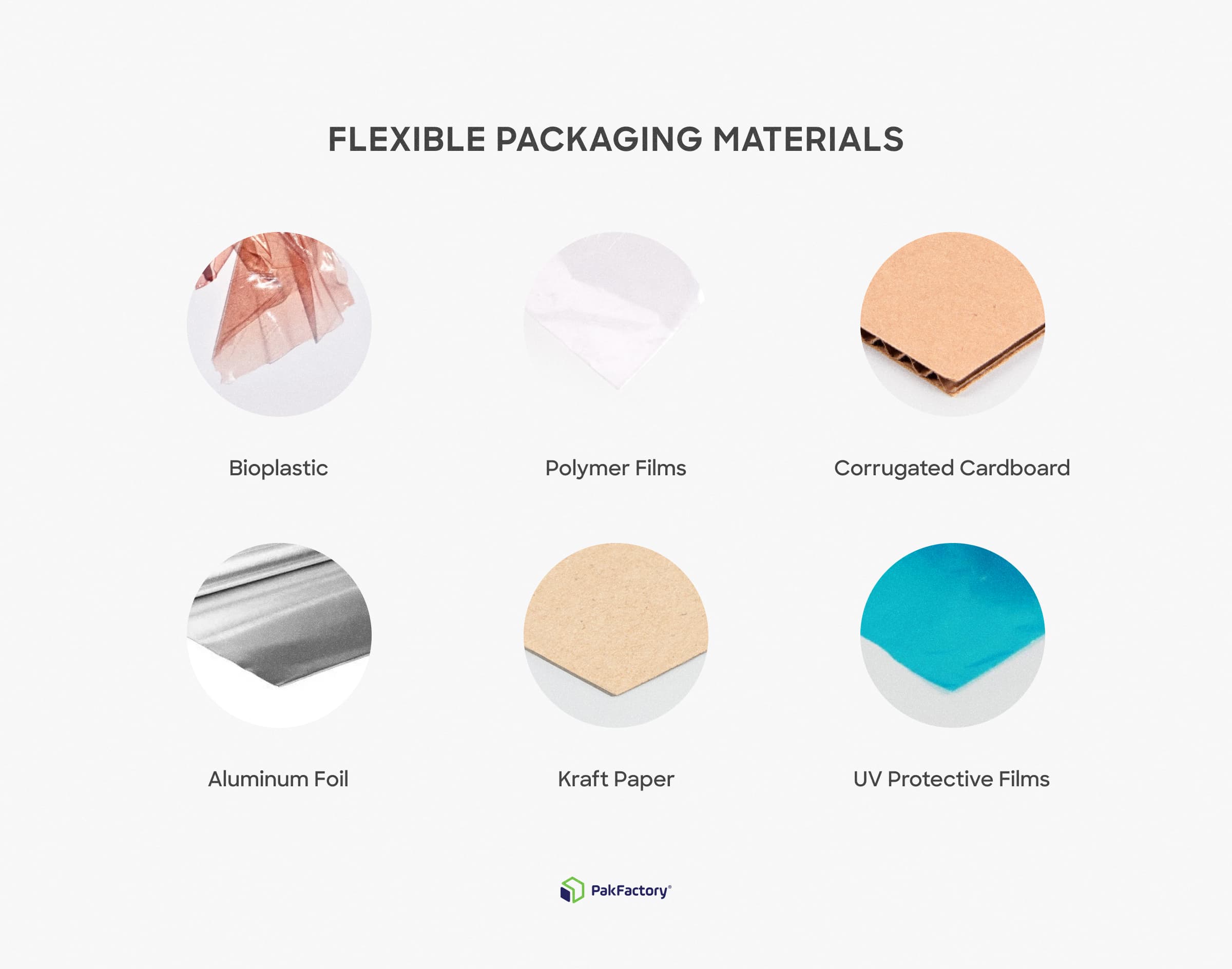
And though the above materials are all popular and excellent choices for flexible packaging, in a bid for increased sustainability, let’s also look at a few alternate material choices that align with eco-conscious goals.
Using fewer materials or incorporating Post-consumer recycled (PCR) materials is possible for brands looking for an eco-friendly initiative. Another avenue to consider is renewable resources, such as plant-based resins and paper, offering a greener alternative to plastic. Polylactic acid (PLA) film can also be incorporated, providing an industrially compostable option.
Sustainable material options are crucial in reducing the environmental impact, so take note of these options! As more consumers demand eco-friendly initiatives from companies, you will only be limiting yourself if you do not carefully consider all avenues of possible materials in your packaging, including sustainable alternatives.
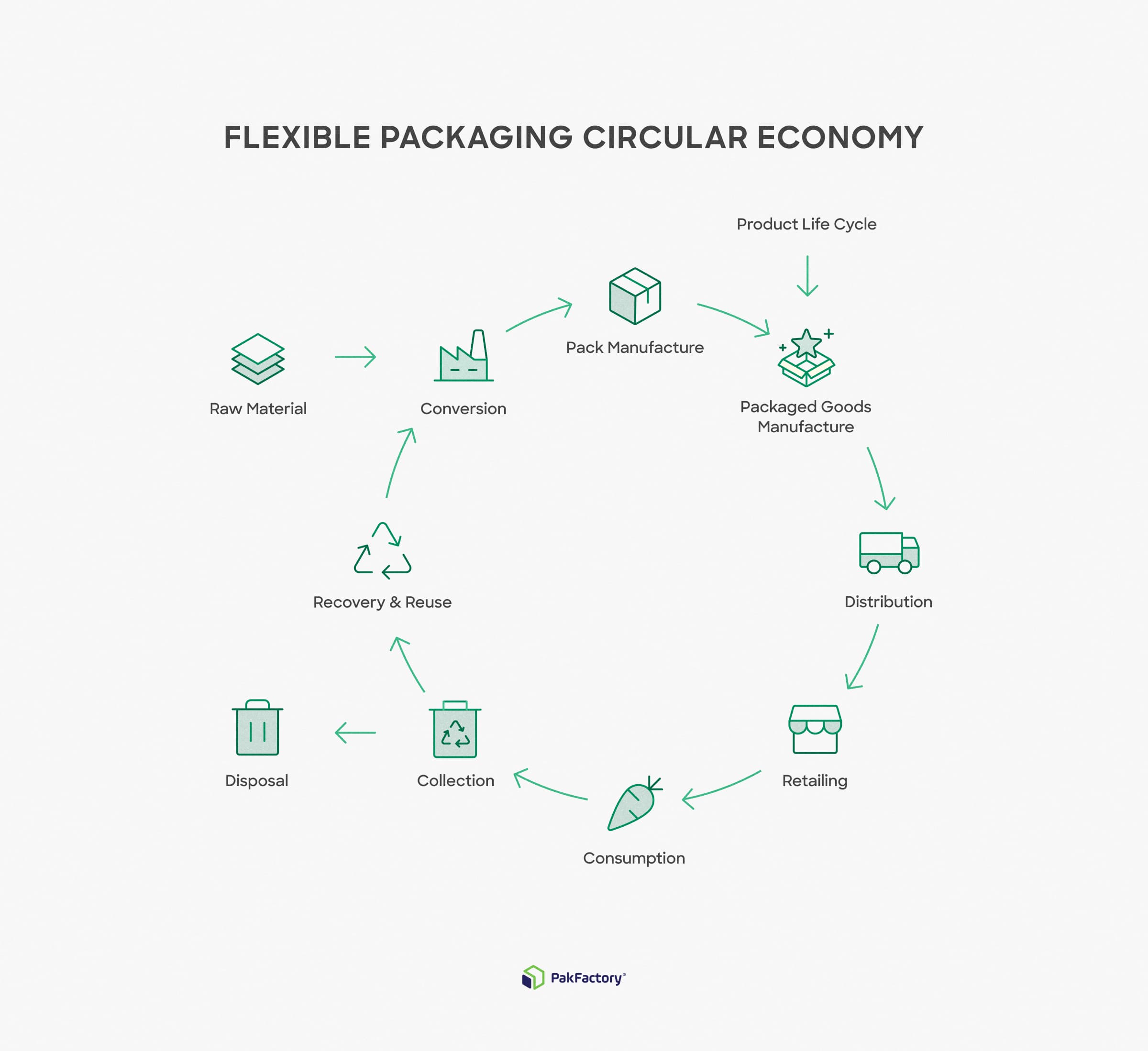
A circular, sustainable economy is crucial for eco-conscious practices as it minimizes waste and maximizes resource efficiency throughout the product lifecycle. Unlike the traditional linear economic system, a circular economy focuses on reducing waste and pollution, utilizing renewable energy and resources, promoting material circulation and recycling, and aligning supply chains with nature-centric principles.
For flexible packaging, in particular, these practices ensure that it has a minimal environmental impact. Flexible packaging plays a crucial role in the circular economy by using fewer raw materials, facilitating easy recycling and reuse, and enabling composting for biodegradable packaging. By embracing the circular economy, businesses can significantly reduce the carbon footprint of packaging and contribute to a more sustainable future.
Printing Techniques and Graphic Design
But now that you’ve got a better understanding of the plethora of available materials at your disposal, both popular and sustainable, it’s time to dive into the possible printing techniques and graphic designs you can apply to them.
With the many different materials available and various forms of flexible packaging like stand-up pouches, you’ll be pleased to know that you have as many printing options too! You can choose from multiple printing and curing technologies to add colors, text, and graphics to your packaging design, like:
- Flexography is a popular method for pliable materials with excellent print quality and color vibrancy. It is capable of printing intricate designs and patterns on various flexible substrates.
- Digital printing provides precise and detailed graphics with customizable elements. With digital printing, brands can create vibrant and eye-catching packaging while maintaining cost-efficiency for shorter print runs.
- Rotogravure printing is known for its exceptional image reproduction and is suitable for applications that require rich and detailed graphics.
By utilizing these advanced printing techniques and incorporating high-quality images, fonts, and colors that align with your product and brand identity, you can create visually appealing and impactful designs that effectively convey your brand’s message and resonate with your target audience.
Safety, Compliance and Quality for Flexible Packaging
So now that you’ve planned the packaging design, have chosen the materials and looked at the printing methods, what’s next? The next step is to meet the industry standards and regulations for this type of packaging. Quality control for flexible packaging involves various tests and measures to ensure its integrity and performance. These tests include:
- The Pressure Decay Test measures the package’s ability to hold pressure and detects any leaks or defects.
- The Instron Test evaluates the seal strength of the packaging, ensuring it can withstand the turbulence of handling and transportation without compromising integrity.
- The Bell Jar Test assesses the barrier properties of the packaging materials, determining their effectiveness in protecting the contents from external factors such as moisture and oxygen.
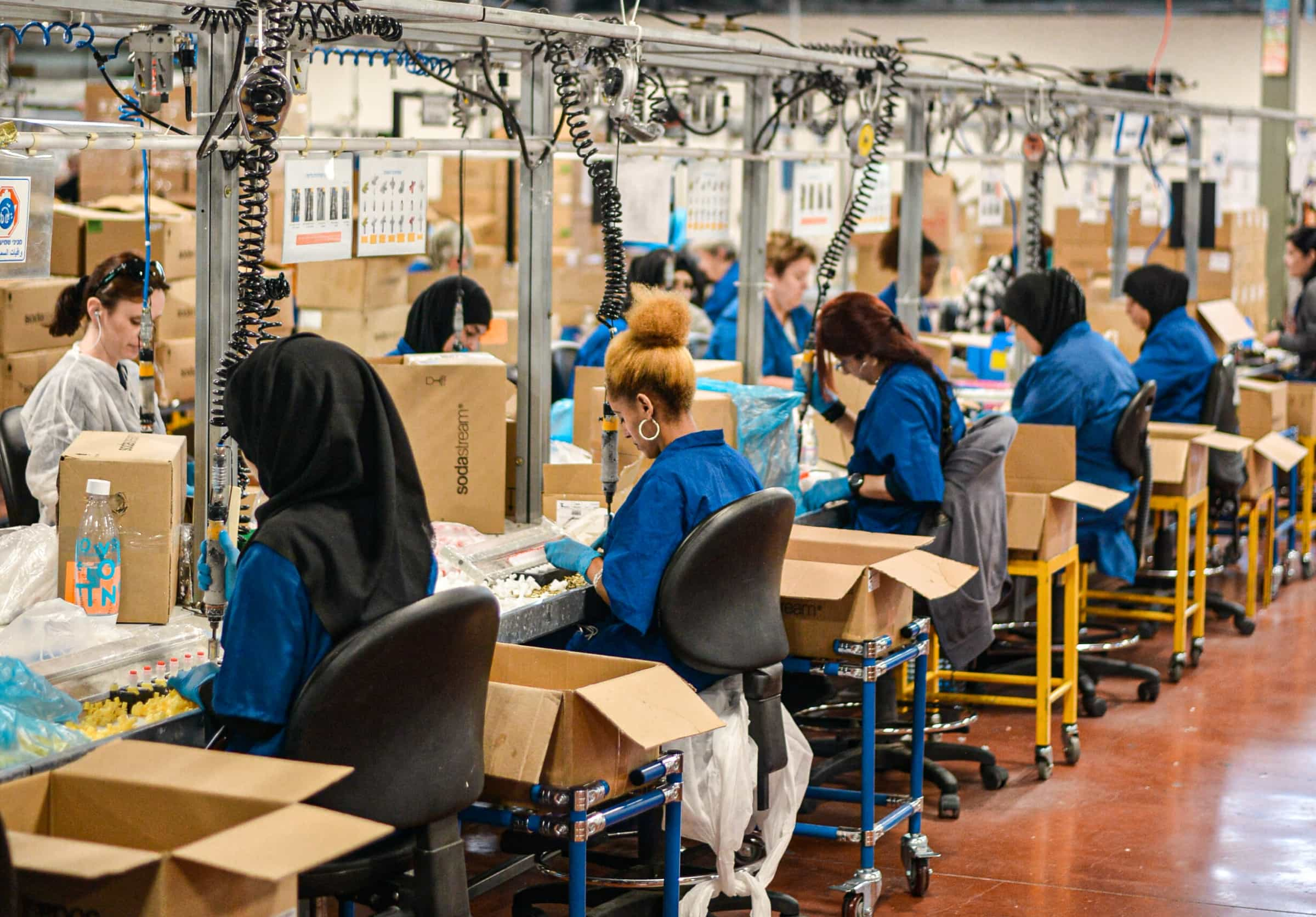
Source: Unsplash
These quality control processes are necessary to provide manufacturers with valuable insights into the quality and performance of the flexible package. By conducting these tests, manufacturers can identify any weaknesses or deficiencies in the design or materials, allowing them to make necessary adjustments and improvements. Moreover, adhering to recognized industry standards ensures the package meets the required specifications and consistently delivers reliable performance and compliance.
But quality control is for more than just controlled environments. The global supply chain faces increasing challenges in ensuring product safety. Food recalls have increased, with microbial contamination and unsanitary handling significant contributors. Rigorous testing is necessary throughout the entire supply chain to protect consumers and minimize health risks.
Compliance with regulations and certifications across the board is crucial to ensure the health and safety of consumers by meeting stringent standards for material safety, hygiene, and product quality. Certifications such as FDA, CFIA, and EU compliance demonstrate adherence to specific regulatory frameworks and allow brands to provide assurance to consumers, build trust, and contribute to responsible and ethical packaging.
Industry Insight: Nestle’s Sustainable Initiative with Flexible Packages
If you are still unsure whether to use flexible packaging for a safer convenient, and more sustainable alternative to traditional packaging, let’s look at a quick example of a big company, Nestle, and how they actively incorporate this type of packaging.
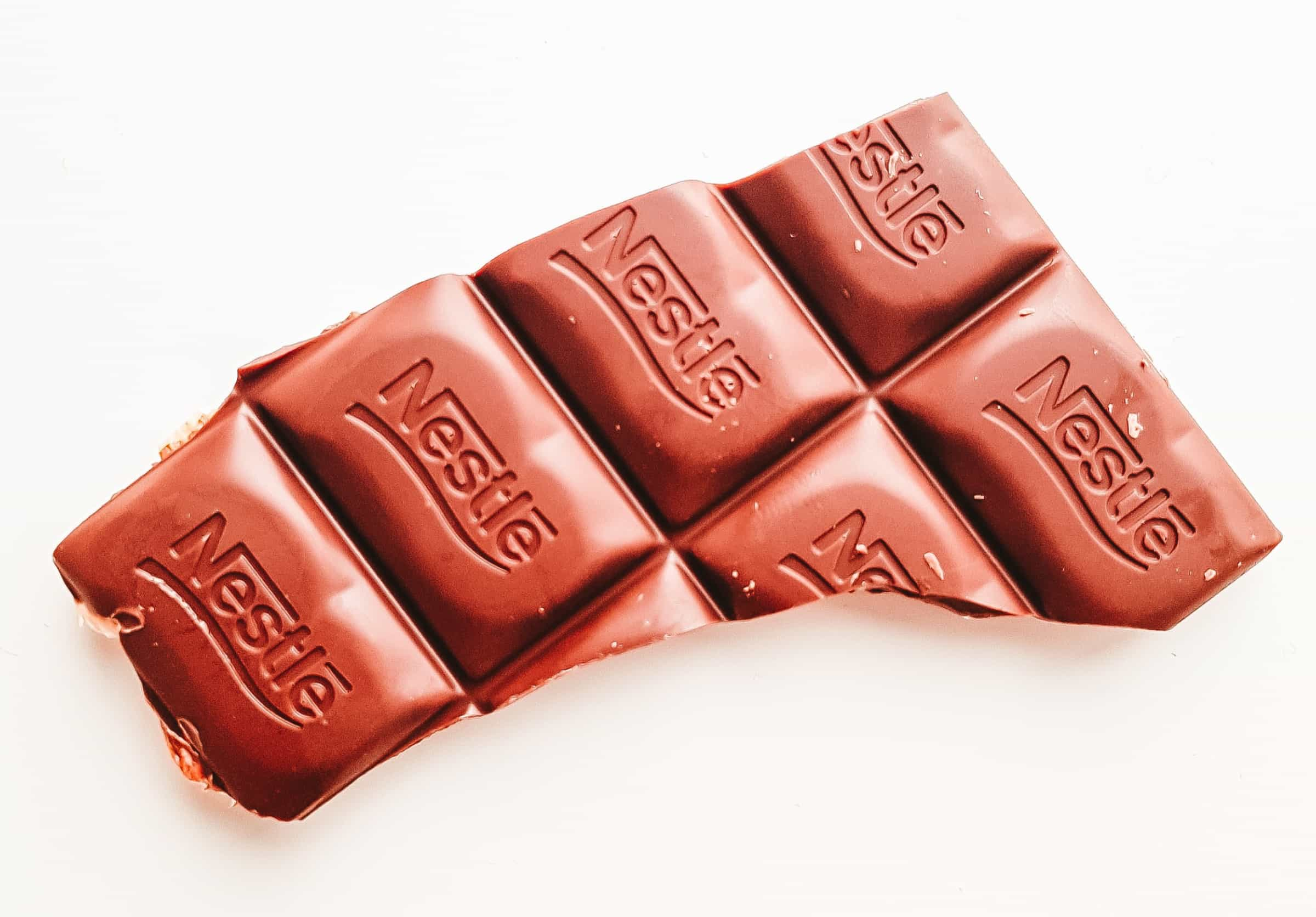
Source: Unsplash
Nestle has implemented a comprehensive sustainability initiative that embraces flexible packaging as a key product element. This initiative revolves around the three core principles of better packaging, less packaging, and better systems.
In pursuing better packaging, Nestle aims to reduce its reliance on virgin plastic by actively seeking alternatives and exploring innovative solutions. This includes piloting reuse and refill systems, increasing the utilization of paper and flexible packaging, and supporting the development of efficient collection, sorting, and recycling systems in the countries where the company operates.
To create a better system for packaging waste management, Nestle collaborates with partners globally to address the infrastructure challenges associated with collection, sorting, and recycling. Through joint projects and activities, Nestle seeks to model successful collection schemes and promote establishing well-functioning systems.
Through its dedication to sustainable packaging practices, Nestle actively contributes to the transition towards a circular economy, where resources are managed efficiently, waste is minimized, and environmental sustainability is prioritized.
Looking to The Future and Beyond for the Flexible Packaging Market
Flexible Packaging is relatively new. With this being said, innovation and evolution are constantly occurring, and this alternative solution to traditional packaging is only getting better and more advanced with time.
Innovations in smart packaging are beginning to coalesce and merge with flexible packaging. Advanced sensors and indicators can now monitor product condition, ensuring freshness and safety throughout the supply chain by detecting spoilage and filtering out harmful agents that might invade the package. And with the recent introduction of QR codes, RFID tags, and NFC, vital information is now provided to consumers, which helps prevent theft and counterfeits. Smart packaging solutions specifically designed for flexible packaging only improve product quality further, empower consumers with information, enhance brand relevance and ensure food safety.
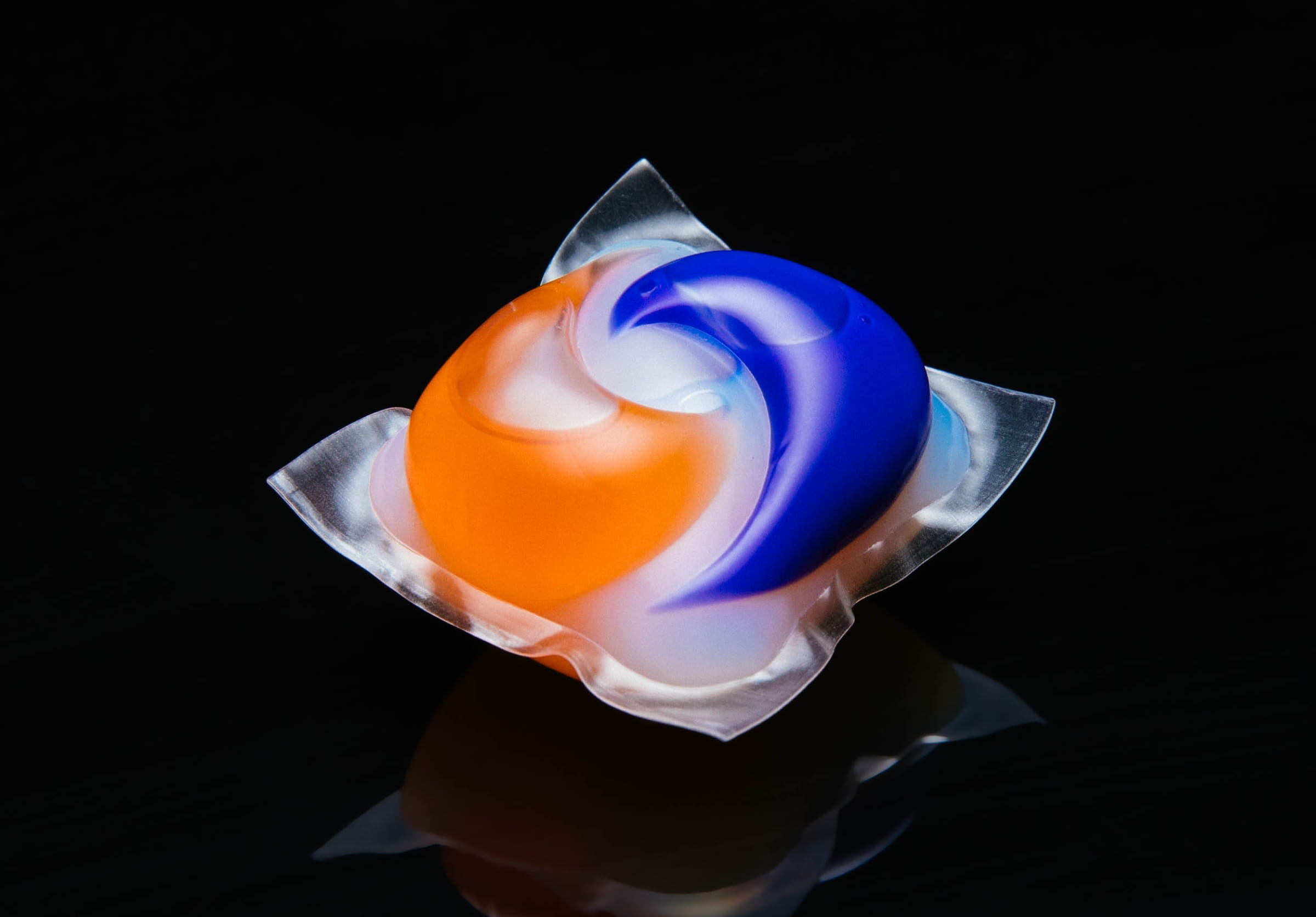
Source: Unsplash
Flexible packaging is rapidly gaining popularity due to its convenience, lightweight nature and positive environmental impact. This is only further enhanced when combined with smart packaging and its advanced innovative technologies. Soon, this type of packaging will no longer be the alternative. It will become the standard across many industries with its versatility and ability to adapt to consumer preferences for sustainability and user-friendliness.
So if you want to start with a flexible packaging solution, discuss your options with one of our product specialists and get expert advice on the packaging solution that is right for you!





